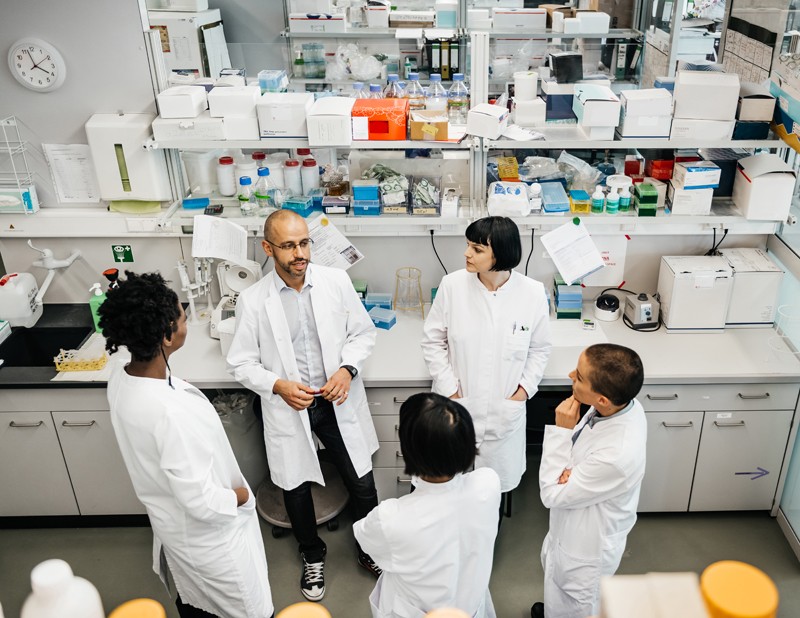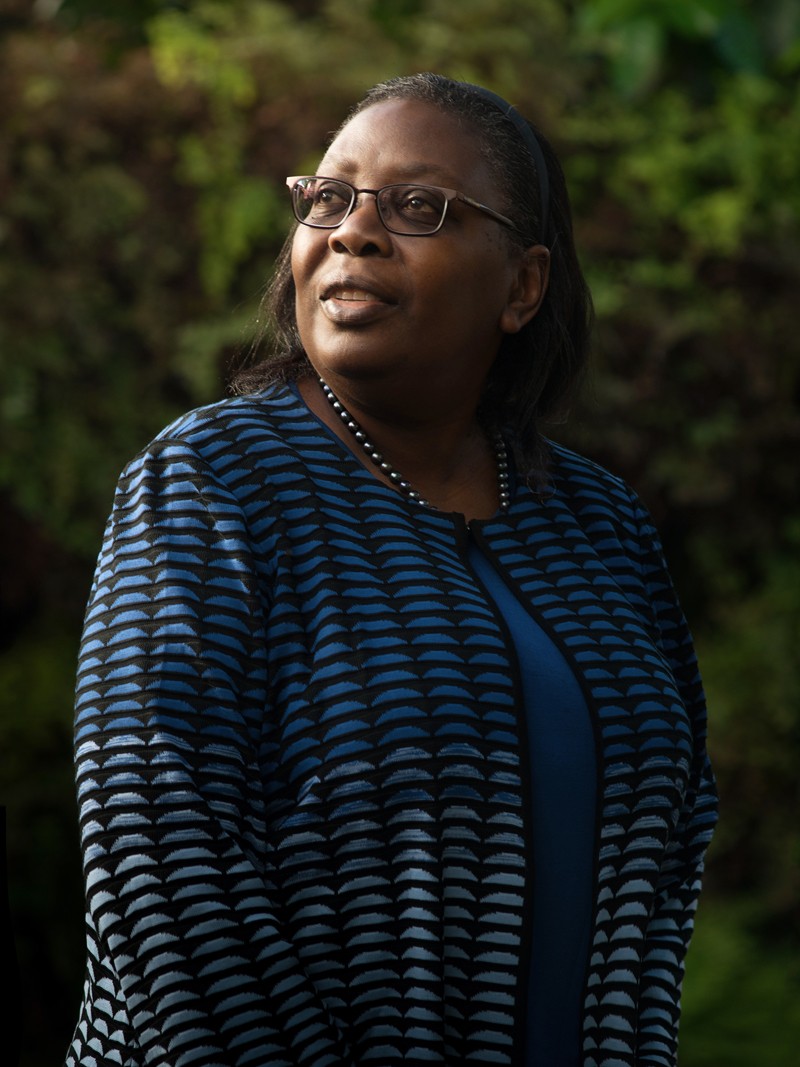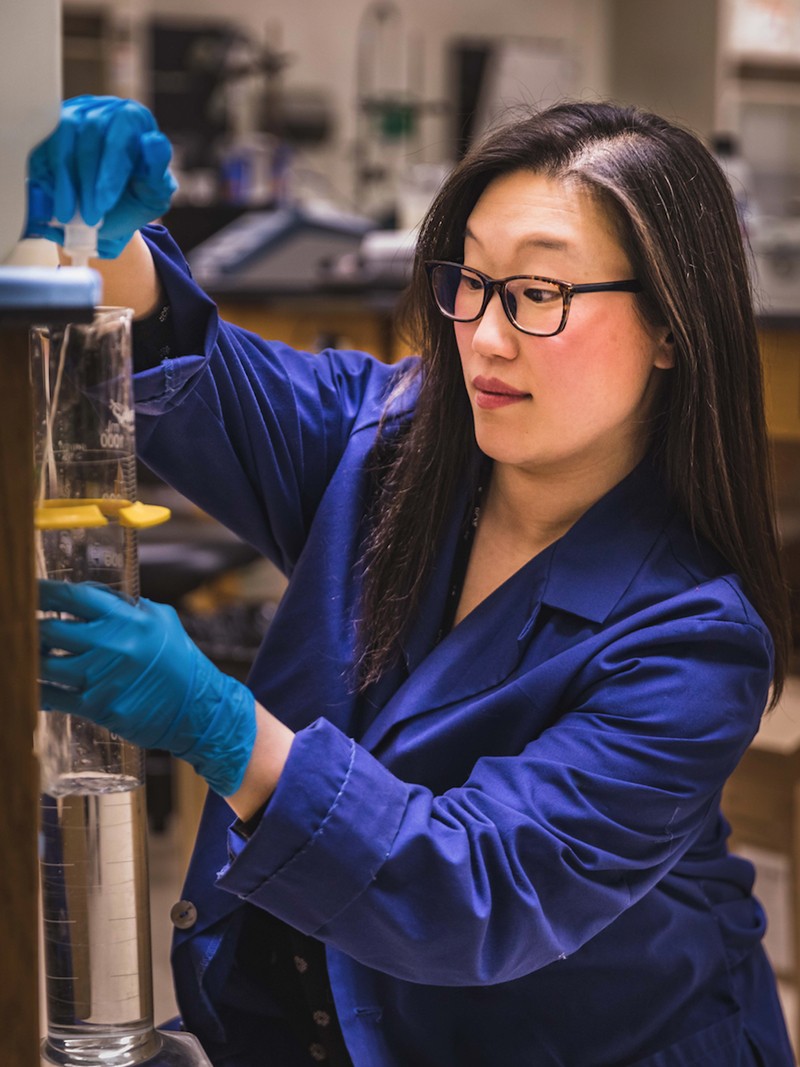By Virginia Gewin
Nature, June 6, 2018 —
Six researchers share their ideas for improving representation.
Many research institutions have made efforts to increase diversity among their administrations, faculty and staff members and student bodies. But research shows there is work to be done — and that the pay-off is immense. A 2017 study of 40 US public universities, for example, found that black, Hispanic and female science-faculty members continue to be under-represented relative to the US population (D. Li and C. Koedel Educ. Res. 46, 343–354; 2017).
Besides honing their strategies to draw more women and people of ethnic-minority groups, some organizations are also expanding opportunities for people from economically disadvantaged areas and those with physical disabilities, as well as trying to better represent people of all sexual orientations and gender identities.

Active efforts and discussions among the science community are needed to solve a persistent problem of under-representation. Credit: Hinterhaus Productions/Getty
Nature spoke to six people on the front lines of diversity efforts for insights into what works.
BRYAN GAENSLER: Beware biases Director, Dunlap Institute for Astronomy and Astrophysics, University of Toronto, Canada.
I started paying attention to this issue in the early 2000s while on a graduate admissions committee — which was 100% men — for Harvard University’s astronomy programme in Cambridge, Massachusetts. We found that when we ranked candidates on what we thought was purely merit, the applicants we chose as best were all men. But a female colleague pointed out that the lack of diversity on our panel had surely had a role. It was a huge eye-opener. I hadn’t yet read the research on unconscious bias. It had never occurred to me that well-meaning people can discriminate. I’ve spent the past 15 years studying that research, so I can put in place equitable recruiting practices.
Make sure that the selection criteria for a job — what you are looking for and how it will be judged — are established before applications are submitted. I advocate that job advertisements minimize the use of ‘outstanding’ and ‘excellent’. A lot of people think that if a job advert sounds as if only superheroes need apply, they themselves should not — which is especially true for under-represented groups in science, technology, engineering and maths (STEM), who can disproportionately experience ‘impostor syndrome’, or a persistent sense of feeling unqualified for their professional position. Selection committees need to be diverse. To that end, we require that they have at least two people from under-represented groups.
To avoid a best-to-worst ranking system, I suggest that candidates be evaluated and given a score of 0, 1 or 2 — indicating whether they meet none, some or all of the evaluation criteria — and that the committee agree to discuss the ‘2s’. Committees must show me how they tried to achieve a diverse applicant pool, and a shortlist for new employees, or I won’t approve it.
In the 3 years since we changed our approach, we’ve had a turnover of half of our employees — around 30 at our institute of 70 people, including 5 faculty members. We had to wrangle with the university to get approval to start collecting data last year, so it’s too early to say whether the applicant pool is changing, but the short-listed candidates are much more diverse than before.
When I arrived, all the postdocs had different salaries. Junior men were earning more than senior women, largely because the men negotiated. For transparency, we now have a standard salary grid tied to each employee’s start date and seniority level.
Our university provides a number of opportunities for people from underprivileged socio-economic backgrounds, including a support group for first-in-family university students. The Dunlap Institute has gender-neutral bathrooms, regularly circulates information about mental-health support and has plans to upgrade our buildings to be accessible to people with physical disabilities.
Colleagues’ reactions to the changes I’ve made have been across the spectrum. The strongest criticism is that I’ve changed the institute from one doing excellent research to one doing social engineering. Data, however, suggest otherwise. We track our metrics on staff members, grants, citations, prizes and talks. Between 2011 and 2016, our institute went from 25% women to 49%, our grant income rose by a factor of 26 and citations increased by a factor of 10.
There’s a misleading sense that you can either do excellent research or be diverse. Not only can you do both, but more-diverse teams lead to excellent research.
DORCETA TAYLOR: Create connections Director of diversity, equity and inclusion, University of Michigan,Ann Arbor.

Dorceta Taylor directs diversity initiatives at her university.Credit: Dorceta Taylor
I’m involved with two initiatives, both three years old, to create career pathways for students from under-represented backgrounds. The Doris Duke Conservation Scholars Program offers undergraduates at various universities a paid internship and mentoring over two summers — the first at a university conducting research, and the second at a non-profit organization — to gain the experience necessary to enter a graduate programme or join the STEM workforce. The third class at my university has 18 participants and starts this month.
The Environmental Fellows Program, a graduate-level summer internship at the University of Michigan, also supports career development and network building for underrepresented minorities, so far totalling around 68 students. Of the two participants who graduated with doctorates last year, one has an academic tenure-track job and the other works at an environmental non-profit.
To get more-diverse applicants, we have to find different talent pools by sending out a recruiter or connecting with community leaders. Attracting diversity takes legwork. At the same time, social platforms such as LinkedIn suggest connections to individuals on the basis of similar academic interests, so there is no excuse for an academic to have an all-white cohort.
When you go to professional conferences, don’t sit and talk to your best friends. Introduce yourself to people. I advise people to be a good ally. Don’t make the same people always be the diversity spokesperson. Once you get a group of good students — moving through established pathways — they become your recruiters.
As an African American professor in the United States, I see a persistent perception that students of colour are not as good, not as interested or not as talented as white students. We need white faculty members to realize that people of colour are as talented as they are, and equally worthy of the investment of time, effort, institutional funds and resources.
Recruiting often falls to professors from ethnic-minority backgrounds who are already on the staff. Complicating matters, institutions don’t reward recruitment of diversity. Departments could provide more funding to support travel and other expenses associated with recruitment.
IJEOMA UCHEGBU: Collect data Pharmaceutical nanoscientist, University College London (UCL), UK; provost’s envoy for racial equality.
To address the lack of racial diversity among UK STEM faculty members, the UK Equality Challenge Unit — a non-profit organization that aims to resolve that lack — is offering an award to universities that are trying to eradicate racial inequalities. Only about 20 of roughly 150 UK universities applied for the inaugural award in 2015. Eight received it, including UCL. Still, it has changed the nature of the conversation about race equality. Now you can talk to university managers about these issues.
For UCL’s application, we collected data that show differentials between promotions and pay for white faculty members compared to those from ethnic minorities. That was quite important. People can’t argue with data. We know that staff and faculty members from ethnic-minority groups don’t progress at the same rate as do their white counterparts, so we’re working on schemes to help them get promoted.
This year, we are piloting an inclusive advocacy sponsorship scheme in which junior minority faculty members pair with a senior colleague, who helps them to navigate promotion prospects. If your parents or grandparents went to university, you probably have a network of individuals from whom to seek career advice. We want to see sponsors encourage their protégés in similar ways, so that they, too, are ready for the next promotion step. We also have a scheme that enables nominated individuals of ethnic-minority groups to shadow a committee member to better understand the remit of various university committees.
We also make sure that a diverse group of people is selected to interview new recruits. For example, we don’t want a black woman to be put off by being interviewed by four white men. People will perform well if think they have a good chance of getting in.
Later this year, we will analyse the data and conduct a staff survey to see how successful our efforts have been.
ERSILIA VAUDO SCARPETTA: Set objective goals Chief diversity officer at the European Space Agency (ESA), Paris.
Our agency will face a significant retirement wave — up to two-thirds of our staff will be leaving in the next 10–15 years. It’s a good moment to inject more diversity into the workforce. It’s also an opportunity to really start to project how diverse we want to be.
When our director-general, Jan Wörner, was appointed in 2015, he made increasing diversity one of his top priorities. We are stronger if we represent different points of view. ESA has 2,200 people across 22 European Union member states. We now want to work on the gender and generational aspects of our workforce.
The proportion of women overall is just 20%, excluding administrative assistants. We feel that the best way to attract women is through early-career schemes. We now have no strict age limit on ‘young-researcher’ recruitment schemes, so that women who have taken time off to have a child don’t miss out on an opportunity to apply.
We also want to make sure that we are attractive to younger generations and to people with different abilities, skills and backgrounds. We are working to create a welcoming environment for people with disabilities, and to learn how best to recruit from that talent pool. Change is slow, but we are improving the way we interview to remove physical barriers for people with mental or physical disabilities, and we are introducing specific training on unconscious bias, focusing on managers who are part of interview boards. We also aim for measurable objectives. For example, by 2019, we want one-third of our new recruits to be women.
We are also working on branding, so that we make ESA more attractive to a wider range of groups with diverse talents.
LEA MICHEL: Take action Biochemist at Rochester Institute of Technology (RIT), New York; director of research for RIT’s Inclusive Excellence programme.

Lea Michel leads a diverse lab group in biochemistry research.Credit: Lea Michel
I’ve learnt that the more diverse the lab, the better — but it is also important that a recruit from a minority group does not feel isolated. We have a National Technical School for the Deaf on campus. When I hired my first deaf student, I didn’t realize that the student was terrified of me as we struggled to learn how to communicate clearly with each other. Now, I have a student in a wheelchair and five deaf students. There is power and comfort in numbers.
My 20 lab members are Asian, African American, Hispanic and Caucasian. One-third are first-generation students. My lab group has never been so productive and engaged. Is there a correlation? I think so. I chose them not because they were different, but to recognize their individual strengths.
Diversity has become increasingly important at my institution, a technical school whose popluation consists of 65–70% male students and faculty members. In 2008, among RIT’s total student population, 10.8% identified as African American or black, Latin or Native American. In 2017, that number was 15.2%.
In 2012, we won a US National Science Foundation ADVANCE grant, which supports women in science, that triggered a huge transformation — an effort to focus on diversity issues. We have a long way to go, but in the past five years, we have streamlined the process for students and postdocs to take advantage of programmes such as parental leave and stopping the tenure clock.
In 2017, we also received a US$1-million Howard Hughes Medical Institute Inclusive Excellence Initiative grant to attract underrepresented minorities across considerations of ethnicity, sexual orientation, socio-economic background and physical disability. We are working to change how faculty members think about mentoring students. Students from under-represented groups aren’t going to come to me if they don’t think they belong, or if they believe they must already know how to do research to be considered. As mentors, we need to reach out to undergraduates in their first year and welcome them into our labs. Admission to our summer research programmes requires only a short essay. We want students to identify characteristics in themselves that will make them good researchers, and for faculty members to recognize those as useful for their team.
GILL VALENTINE: Be an ally Geographer and chair of the equality, diversity and inclusion committee at the University of Sheffield, UK; LGBT champion for the university.
I’m the most senior out gay person at the institution. We have a lot of activity promoting equality and inclusive culture. In January, as part of our ‘allies’ programme, we launched a rainbow-lanyard campaign to allow staff members to show support for lesbian, gay, bisexual and transgender (LGBT+) equality, and about 2,000 have signed up for it so far. We also try to get people to think about what an inclusive culture might look like.
In 2011, the UK National Institute for Health Research, the country’s main funder of medical research, said it would no longer fund medicine or science departments that didn’t hold an Athena SWAN (Scientific Women’s Academic Network) award. SWAN is a government accreditation scheme set up to drive the recruitment of women into science.
Our university, like others, has taken several targeted actions to retain women and black, Asian and other faculty and staff members from under-represented groups. We’ve introduced a mentoring scheme to identify and support individuals who aspire to be university leaders. The university also offers small financial awards — between £5,000 (US$6,622) and £10,000 each — that enable women who have been on maternity leave to keep their research on track. So far, the programme has awarded a total of £2.1 million to 163 women, who have subsequently brought in a collective £20 million in grants. To improve gender representation, we check our job adverts for gender-biased language.
Creating an inclusive culture is not about one-off initiatives — it’s about ongoing support, mentorship, governance and a clear narrative that building diversity is crucial for success. That’s when you get the momentum.











